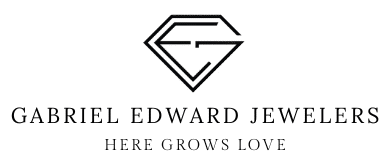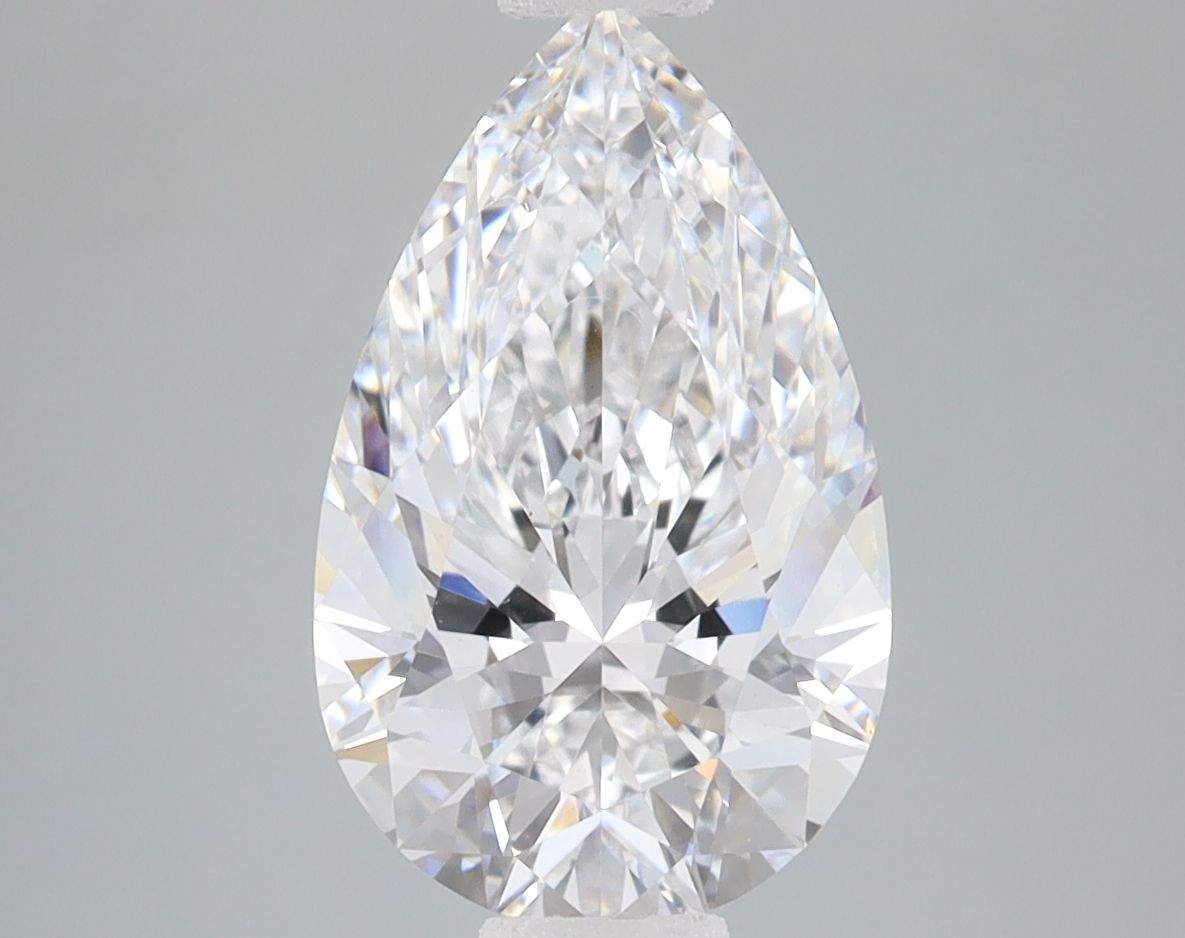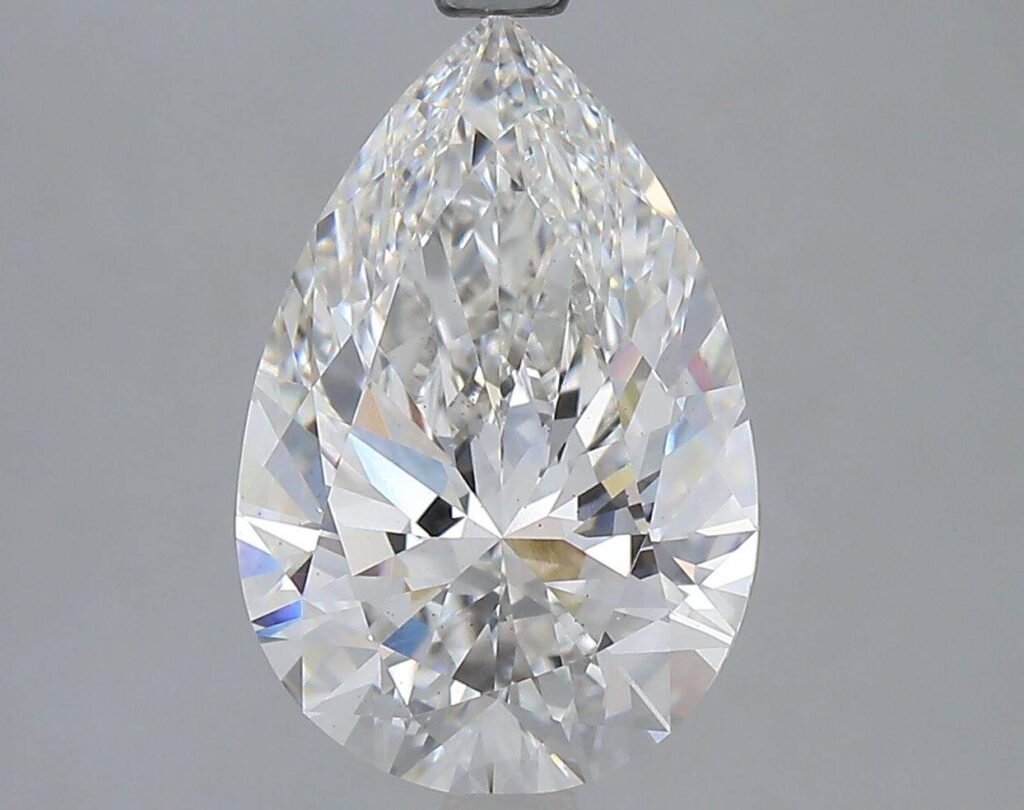How To Buy The PERFECT
Pear-shape Diamond Engagement Ring
If drafting Diamond shapes for your Engagement Ring was building a basketball team, a Pear-shape Diamond would be a franchise point guard. Sharp, versatile, the star of the show. Pear-shape Diamonds are always in command.
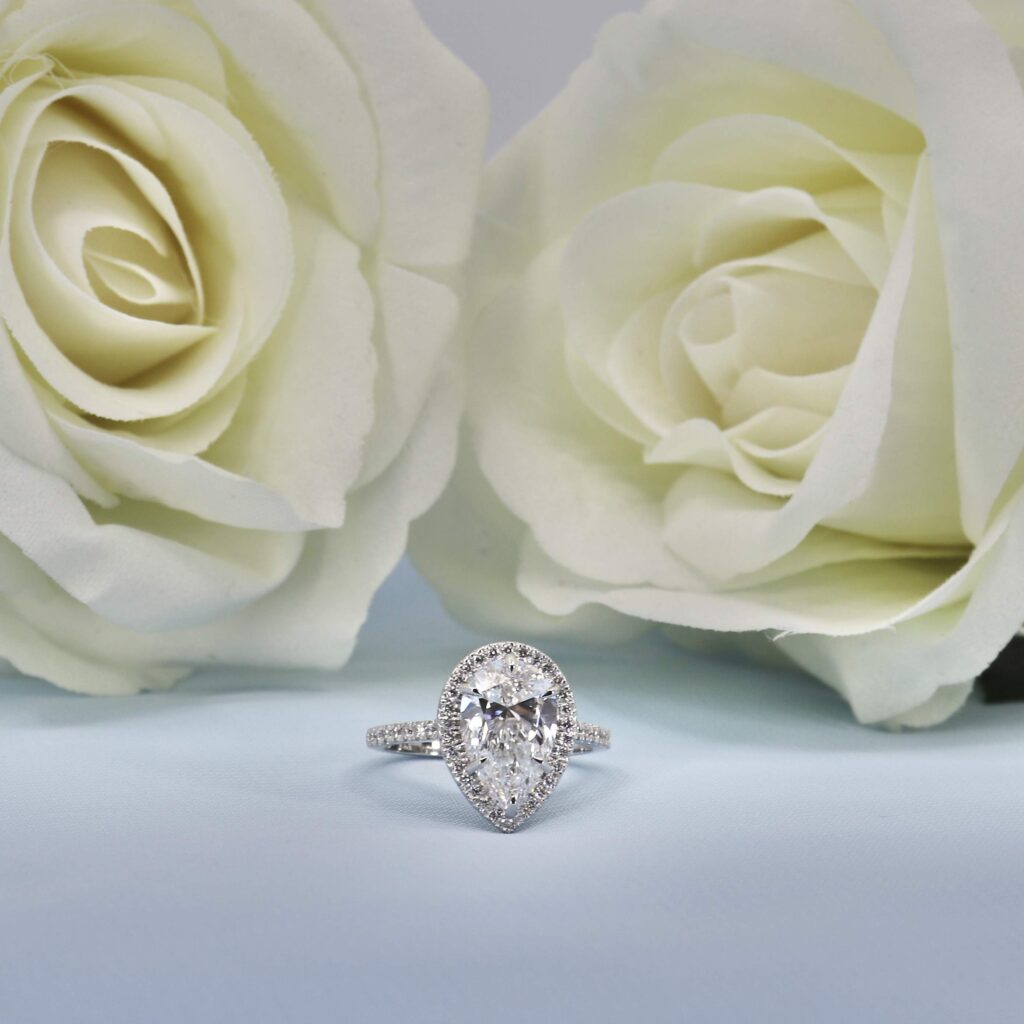
- Scouting Report: Gorgeous elongated shape, huge surface area by Carat Weight, excellent Color & Clarity masking, great sparkle.
- Needs improvement: Literally nothing, if your Pear-shape Diamond is “Excellent” Cut. Only thing you need to avoid is a noticeable “bowtie” (dark shadow across the middle of the stone).
- Popularity Rank (Current): #4
- Surface Area / Carat Weight Rank: #2
- Light Return Rank: #5 (Behind Round, Princess/Cushion, and Ovals)
Want the quick steps instead of reading the whole Playbook? We got you covered.
- Set Cut Grade from “Ideal” to “Excellent”
- Set Color Grade to “E”
- Set Clarity Grade to “VS1”
- Open Advanced Filters and set Polish and Symmetry to “Excellent”
- Set Price to your ideal budget for the whole Ring, minus a $1,000 buffer for the Setting
- Select “IGI” as the Lab
- Set Depth from 57.5-65%
- Set Table from 55.5-63%
- Manually check that Crown Height is between 11.5 – 16%
- Manually check that Pavilion Depth is between 41 – 46%
- Manually check that the Diamond is CVD Type IIA (always passes diamond tester)
- Set your Carat Weight range. Factor in:
- How large of a Diamond she’s comfortable wearing
- How large of a Diamond looks nice but not “overpowering”
- The cost of the Setting (let’s say roughly $1,000)
Cut Grade of an Pear-shape Diamond
Cut Grade refers to how well your Diamond reflects light. An “Excellent” Cut Pear-shape Diamond is your Ring’s MVP– reflecting tons of light in its center and a a touch less towards the point, with a negligible bowtie. A poorly-cut Pear Diamond is has no business on your roster and will be cut immediately 😉 (sorry I had to).

“Excellent” Cut Pear-shape Diamond with max light return across the center

Poorly-cut Pear-shape Diamond with noticeable bowtie (dark shadow across the middle)
Straight from the IGI’s Fancy-shape “Excellent” Cut Guidelines, below are the Proportion #s behind an “Excellent” Cut Pear-shape Diamond. “Excellent” Cut means maximum sparkle from all parts of the Diamond and no dark shadows.

Let’s look at a real “Excellent” Cut Pear-shape Diamond’s IGI Report below…

All Proportions within “Excellent” Cut range…
- Table % is 59% in the Report above ✅ Optimal light received into the Diamond.
- Depth % is 62.4% in the Report above ✅ Optimal Carat Weight distribution, no shadows, and Diamond looks like a proper 3 carat (overly-deep Diamonds look smaller once set in a Ring, since most of the weight is on the bottom, which you can’t see).
- Crown Height is 14.5% in the Report above ✅ Optimal balance between fire (rainbow-colored light) and brilliance (white light). Too much brilliance and the Diamond looks “glassy”, too much fire and it looks like a Moissanite.
- Crown is a Diamond’s top half, above the girdle.
- Pavilion Depth is 43.5% in the Report above ✅ Maximum volume of light is being reflected from the Diamond.
- Pavilion is a Diamond’s bottom half, below the girdle.
- Girdle is Slightly Thick in the Report above ✅ The Diamond is durable and bears no risk of chipping while being set in your Ring.
- Girdle is the Diamond’s border dividing crown and pavilion.
- Polish is “Excellent” in the Report above ✅ Each of the Diamond’s facets are polished to the highest degree possible.
- Symmetry is “Excellent” in the Report above ✅ If you split the Diamond in half, right down the middle, one side would look exactly like the other. Fire, brilliance and scintillation (contrast between light and dark areas) are displayed evenly.
- Length/Width (13.08 divided by 7.92) ratio is 1.65 ✅ Moving outside the top end (1.75 L/W) will lead to less light return on the top and bottom and a thin, awkward shape. Moving below 1.40 L/W gives the Pear way too rounded of a ratio.
- Cutlet is “Pointed” ✅ The pavilion facets all meet at the pointy bottom of the Diamond, which has been cut proportionally and isn’t visible when looking down at the Diamond.
- Comments Section: This isn’t a Proportion, but since we have the Report open, make sure you’re looking at a CVD Type IIA Lab Diamond. These are the purest form of Diamond, and they always pass diamond pen testers.
When you’re searching for a Diamond online, let the Report be your guide. If you’re unsure or just want to confirm the Diamond’s beauty, call or text us @ 305-796-6143.
You see the “Additional Requirements” section at the bottom left corner of the chart above? Our team will double-check that in person by analyzing the Diamond under ASET Scope to confirm there’s no bowtie.
- Note: A Pear with a bowtie will have blue (contrast) as the primary color across the middle under ASET Scope. An “Excellent” Cut Pear-shape will have red (max light return) and green (lesser light return) as the primary colors across the middle under ASET.
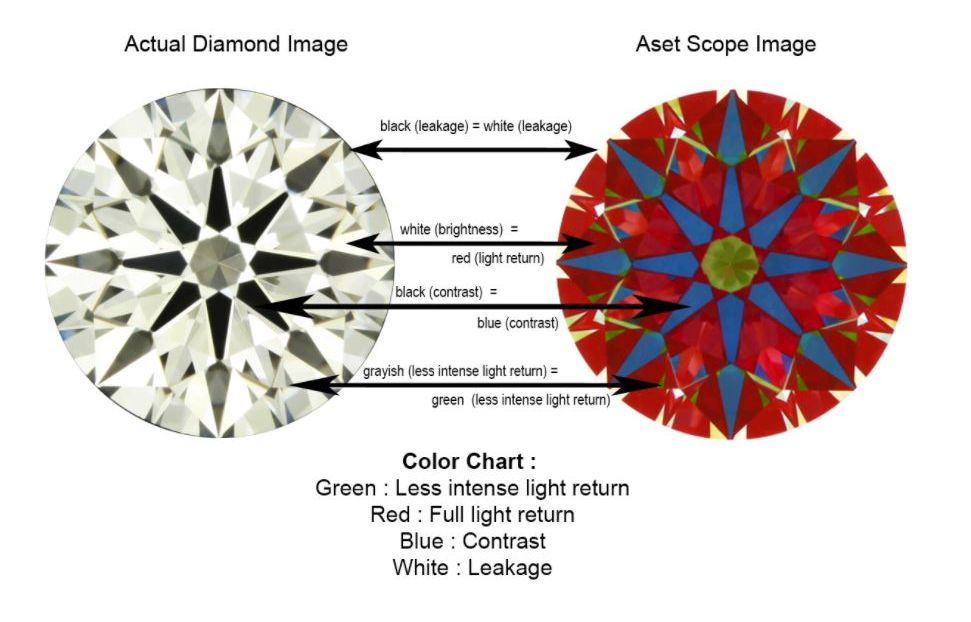
Quick Note:
“Ideal” isn’t an official Cut Grade for IGI graded Fancy-shape (non-Round) Diamonds. The highest Cut Grade they can receive is “Excellent”.
When a jeweler lists a Pear Diamond as “Ideal”, it’s a marketing gimmick, not an official Cut Grade shown on the Diamond’s Grading Report (aka Certificate). Keep an eye out for this! Trust the data straight from the Laboratory that’s grading the Diamond (the IGI or the GIA).
Set Cut Grade from “Ideal” – “Excellent”, Table from 55.5-63% and Depth from 57.5-65%.
On the IGI Report, check Crown Height (11.5 – 16%) and Pavilion Depth (32 – 37%).
What’s the best Color Grade for my
Pear-shape Diamond Engagement Ring?
One of the many reasons I love Lab-Grown Diamonds is that you’ll be able to choose a large, perfectly-cut, high Color Diamond for well within your budget. We’ll cut straight to the chase, the best Color Grades for your Pear-shape Diamond Engagement Ring are the “Colorless” range- Grades “D”, “E” and “F”- and our favorite Color Grade is “E”, because it’s the perfect mix of price and quality. This applies to any size Diamond, from 1 carat all the way to 6 carats+.
- “D” Color Diamonds have no included coloration. They’re perfect. The ‘72 Dolphins but make it a Diamond.
- “E” Color Diamonds have the SLIGHTEST amount of coloration. Just like “D” Color Diamonds, they’re a bright, crisp white. Think 72-10 Chicago Bulls. Perfect season? Almost. Championship-level? Absolutely.
- The difference between a “D” Color and “E” Color Diamond is SO SLIGHT that it begs the question, “Is that tiny upgrade worth $500, $1,000, etc. more?”. That’s totally up to you, but in my opinion, “E” is the sweet-spot.
- “F” Color Diamonds are the last grade in the “Colorless” range, with a minor amount of included coloration. Standing alone, “F” Color Diamonds are beautiful. But the difference between “E” and “F” is easily noticeable to the naked eye. “E” is a much brighter shade of white.
Set your Color Grade filter to “E” and move on to the next step.
What’s the best Clarity Grade for my
Pear-shape Diamond?
Clarity is the least important of the 4 Cs. All that you care about in terms of Clarity is that your Diamond is eye-clean. An eye-clean Diamond has no imperfections that are visible to the naked eye. If you can’t see it without a jeweler’s loupe/microscope/etc., you shouldn’t be paying for it (in my opinion).
The best Clarity Grade for your Pear-shape Diamond Engagement Ring is “VS1”, short for “Very Slightly Included (1)”. Straight from the GIA, VS1 Diamonds contain “inclusions that are minor and range from difficult to somewhat easy for a skilled grader to see under 10X magnification”. VS1 Clarity Grade will be eye-clean on practically any Diamond size you’d use for an Engagement Ring. We’ve made Rings with 6+ carat Pear-shape Diamonds with VS1 Clarity, and as expected, there are no imperfections visible to the naked eye.
Below, VVS1, VVS2 and VS1 Clarity 3 carat Pear-shape Diamonds. Spot the difference 😊
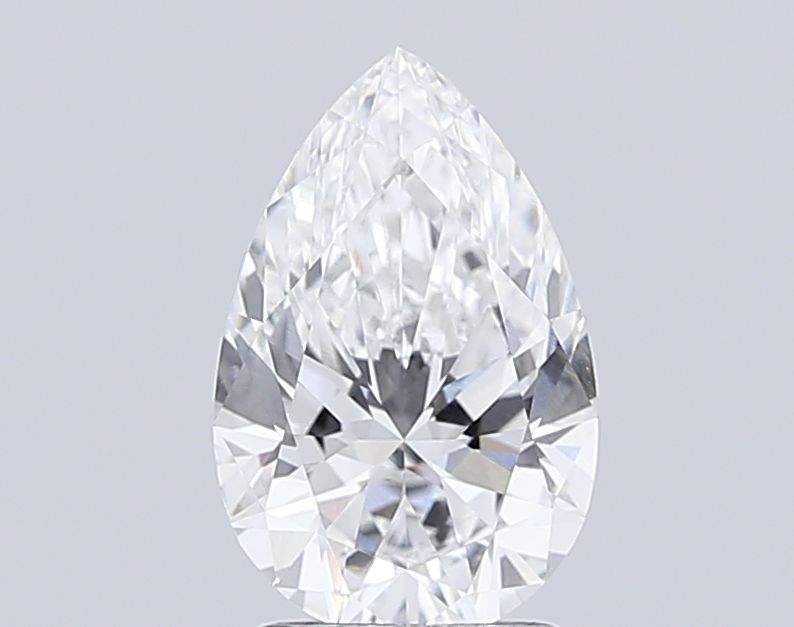
3.05 carat IGI graded “VVS1” Clarity
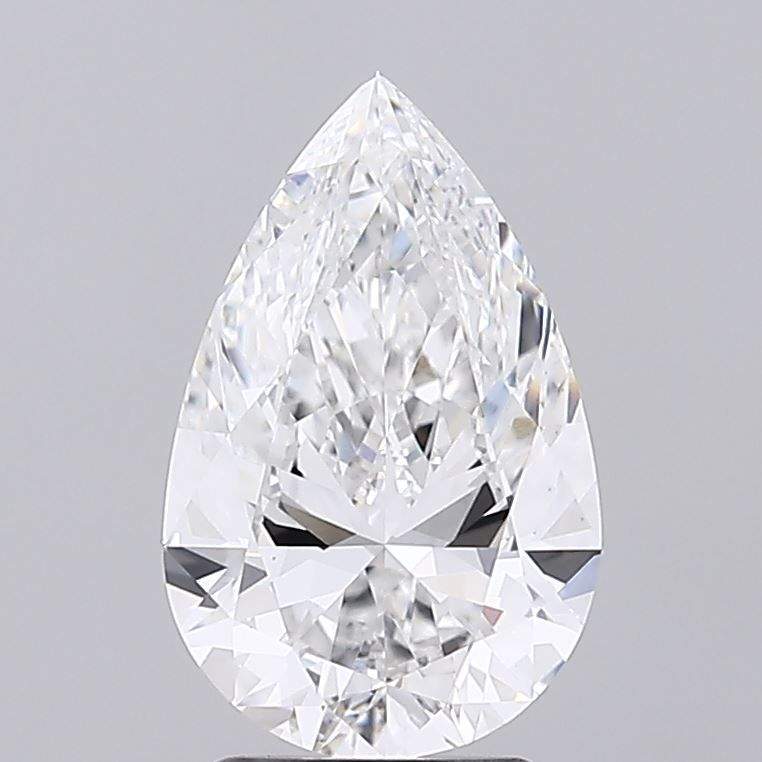
3.02 carat IGI graded “VVS2″ Clarity
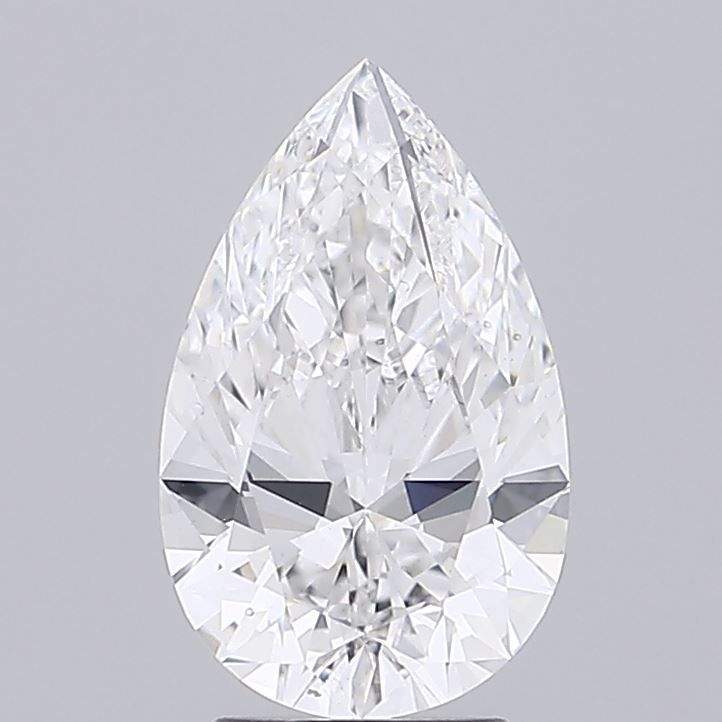
3.02 carat IGI graded “VS1” Clarity
No one can tell the difference between VVS2 (or higher) Clarity and VS1 Clarity with their eyes. Even under 10X zoom, you’re paying $500+ for one or two less specks.
Set your Clarity Grade filter to “VS1”.
What’s the right Carat Weight for my
Pear-shape Diamond?
This one’s totally up to you. A 5 or 6 carat Diamond might fit within your budget range, but is your lady comfortable wearing that? Do you live in a well-lit neighborhood?? Does she keep that thing on her???

Left to right: 5.00 carats (D Color and VS1 Clarity), 4.01 carats (E Color and VS1 Clarity), 3.01 carats (F Color and VS1 Clarity), 2.43 carats (E Color and VS1 Clarity)
All IGI graded Lab-Grown Diamonds, “Excellent” Cut
Ivana’s a finger size 6!
If you’re unsure of what size Diamond she wants, ask her. Bring it up casually. Show her a Ring from our Instagram around the size you’re shopping and see what she thinks of the main Diamond. Too big? Too small? Just right? Show her a few, see which one she thinks looks best.
With Lab-Grown Diamonds, the sweet spot seems to be between 3 and 4 carats. Not too big, and definitely not too small. Yes, some couples go with 2 carat Diamonds. And others go with 5, 6 and 7 carat Diamonds. Don’t worry about what everyone else is wearing- pick the right Diamond for you. Diamonds symbolize forever with your soulmate- no matter how big they are.
Set your Carat Weight range (3.00 – 3.25 carats if you’re unsure).
